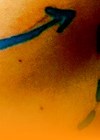When it comes to treating our patients, the most forgotten areas I see are the neck and hands. The hands are prone to premature ageing as they are exposed to many factors and suffer from volume loss, age spots, dry skin and prominent veins. However, with new product innovations and the ability to combine treatment options, it’s possible to help reduce and diminish these signs of ageing safely, with little or no downtime.
My client, a 56-year-old woman, came to the clinic to address her “wrinkly” and “bony” hands. She felt they aged her and she wanted to improve the tone, texture and volume loss.
I felt that the best way to address her concerns was a combination treatment of PhilArt polynucleotides to address the tone and texture, saypha® Rich (a non-cross-linked hyaluronic acid (HA) to address hydration, fine lines and wrinkles as well as saypha® Filler (a cross-linked HA) to replace the volume loss.
PhilArt is an injectable gel consisting of long-chain polynucleotides that facilitate the body’s intrinsic cell renewal process. The hydration effect on the skin [1] and combating of free radicals [2] encourages fibroblast proliferation (cells that produce collagen) [3,4] and collagen production [2]. saypha® is a range of injectable hyaluronic dermal fillers and is produced by Croma Pharma in Austria. The range is fully MDR approved for aesthetic purposes with over 100 million syringes manufactured to date.
Treatment
The patient underwent three separate sessions of treatment using PhilArt 2ml and saypha® Rich 1ml every three weeks for a three-course session. PhilArt 2ml + saypha® Rich 1ml were divided equally between both hands per session. To address the volume loss and complete the treatment protocol, three weeks after the last skin booster injections, 1ml of saypha® Filler was injected into each hand.
The technique I chose to use for the skin boosters, PhilArt and saypha® Rich, was intradermal microdroplets. For the cross-linked saypha® filler, I used a 25g cannula with a single proximal injection site and a fanning technique to evenly spread the product to the targeted areas.

Results
The pre-treatment images were taken in December 2023 and the post treatment images were taken in March 2024, four months after the first treatment and one week after the treatment to allow for swelling to settle.
Following the treatment there was an improvement in the tonicity and texture of the skin as well as a reduction in lines and wrinkles especially around the wrist area. The veins and ligaments were less visible due to the increase in fullness and hydration.
The patient was very happy with the results and the proposed maintenance treatment included hand cream with SPF, PhilArt & saypha® Rich – one session every six months and if required at review, saypha® Filler top-up at month six to nine.
References
1. Bartoletti E, Cavallini M, Maioli L, et al. Introduction to polynucleotides highly purified technology. Aesthetic Medicine 2020;7(1):43–7.
2. Colangelo MT, Govoni P, Belletti S, et al. Polynucleotide biogel enchances tissue repair, matrix desposition and organization. J Biol Homeost Agents 2021;35(1):355–62.
3. Cavallini M, Bartoletti E, Maioli L, et al. Consensus report on the use of PN-HPT (polynucleotides highly purified technology) in aesthetic medicine. J Cosmet Dermatol 2021;20(3):922–8.
4. Cavallini M, Papagni M. Long chain polynucleotides gel and skin biorevitalization. Int J Plas Dermatol-ISPLAD 2007;3(3):27–32.
Declaration of competing interests: None declared.
COMMENTS ARE WELCOME










